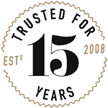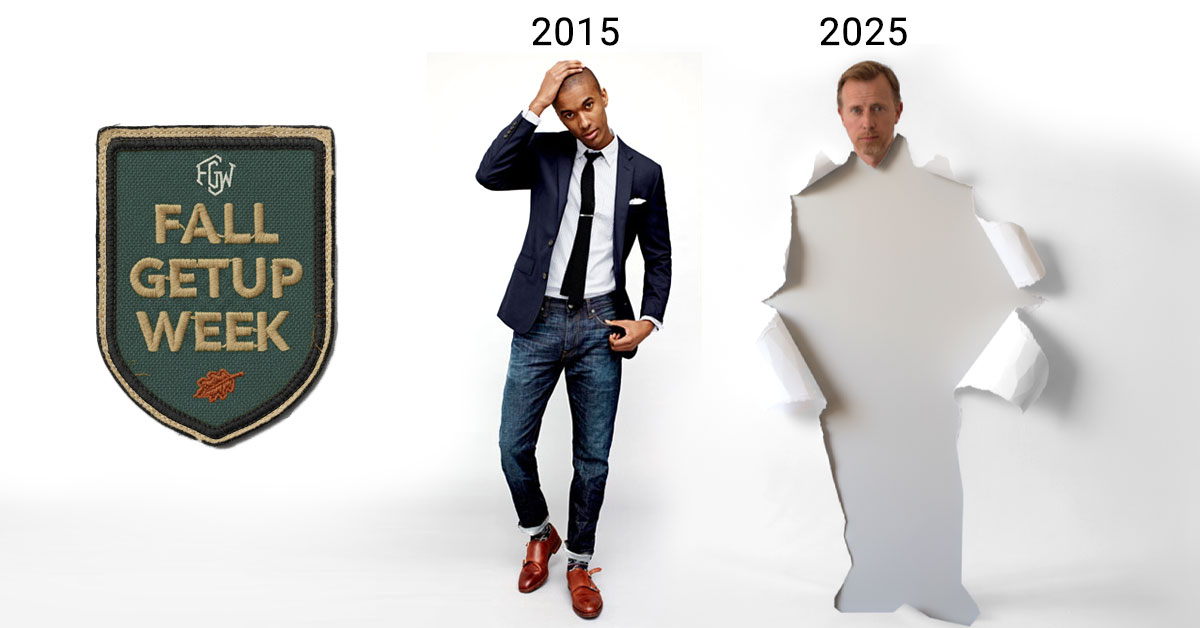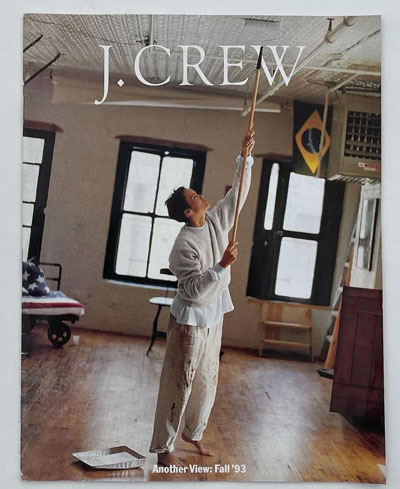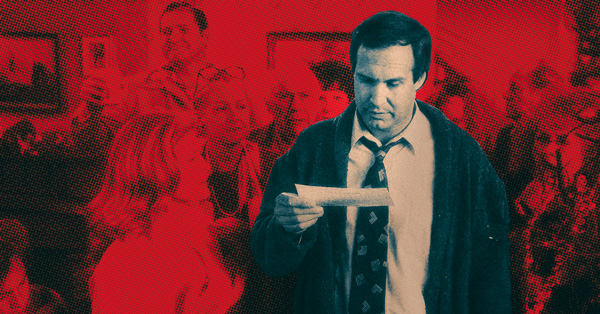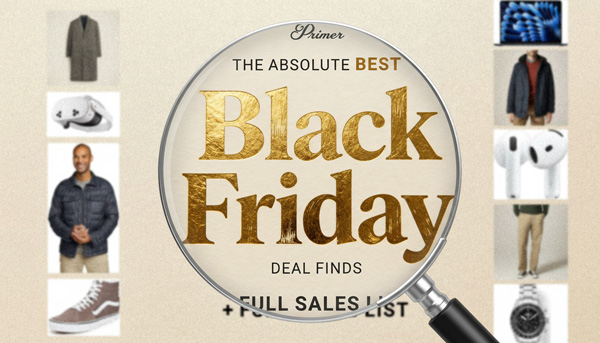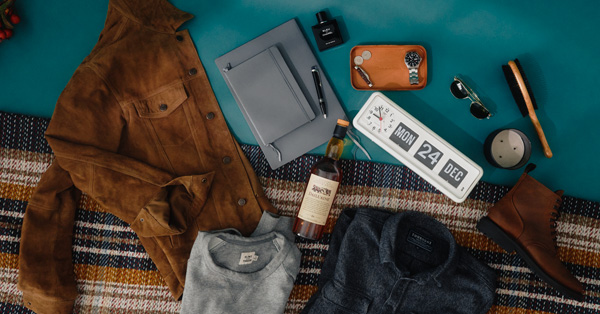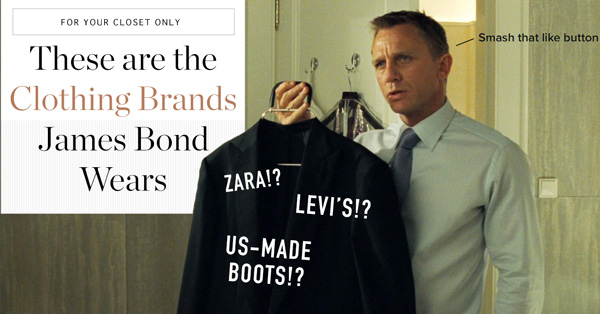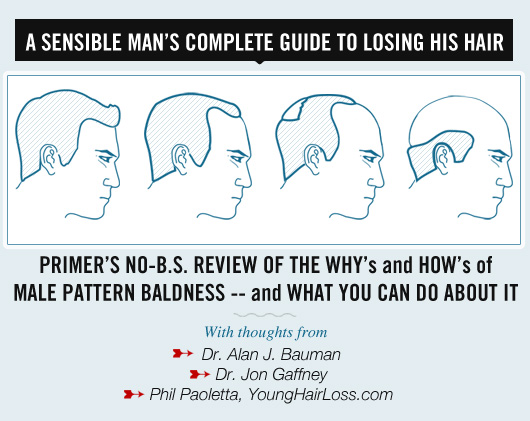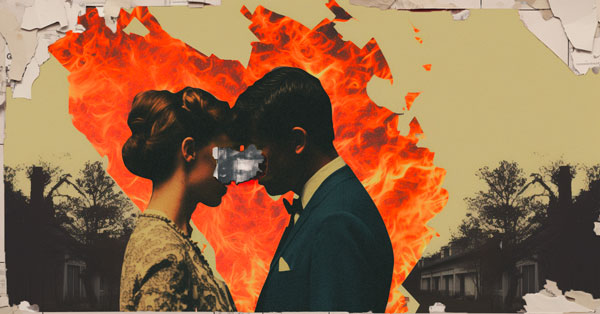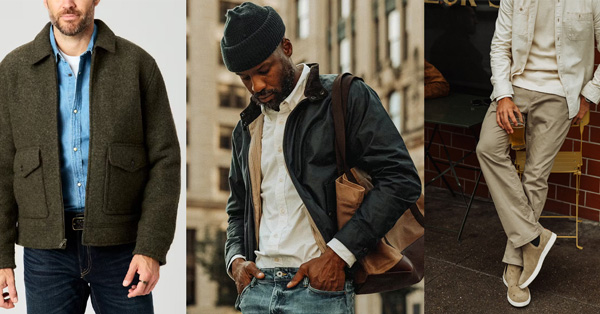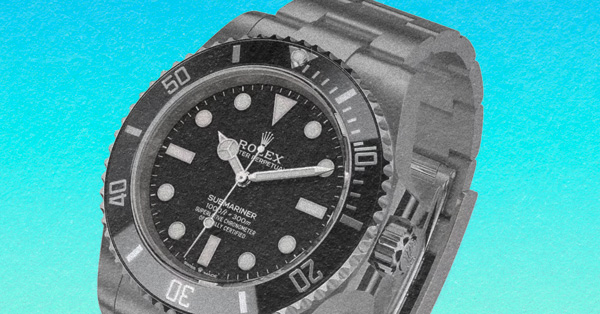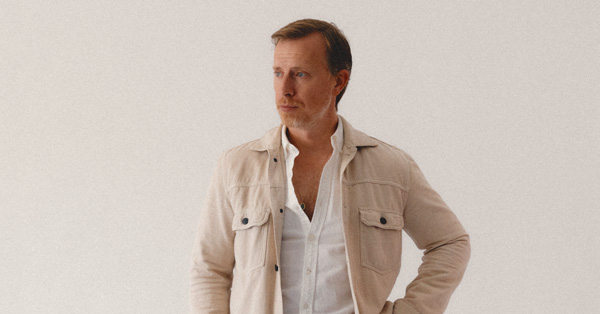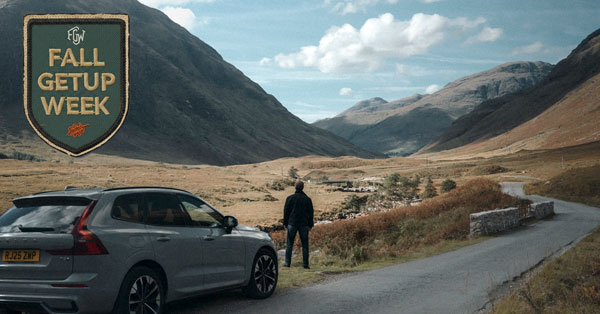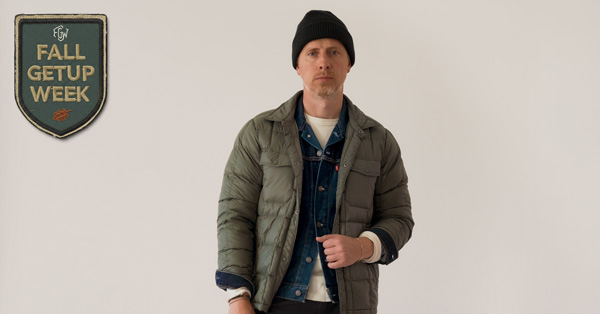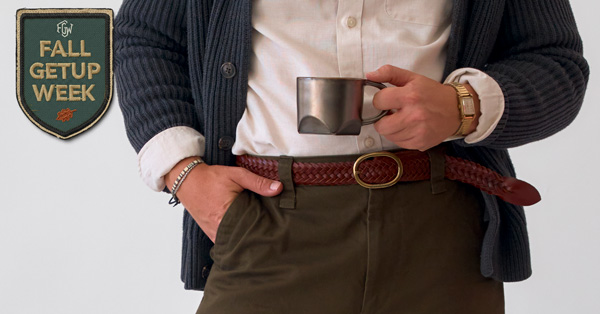Its an outfit men have worn for decades: navy blazer, jeans, loafers.
The format stays the same, but each decade has shaped it into its own reflection. In the early 1990s, this look was part of a larger mood, affluent, collegiate, at ease with itself.
American menswear favored natural shoulders, soft tailoring, heavier denim, and a laid-back kind of polish. It was the height of post-1980s optimism and the start of what you might call the “Gap-era democracy” when dressing well didn't mean hard. The J.Crew catalog sold this look by staging it near docks and Jeeps, always within walking distance of either a lacrosse field or a bookstore.
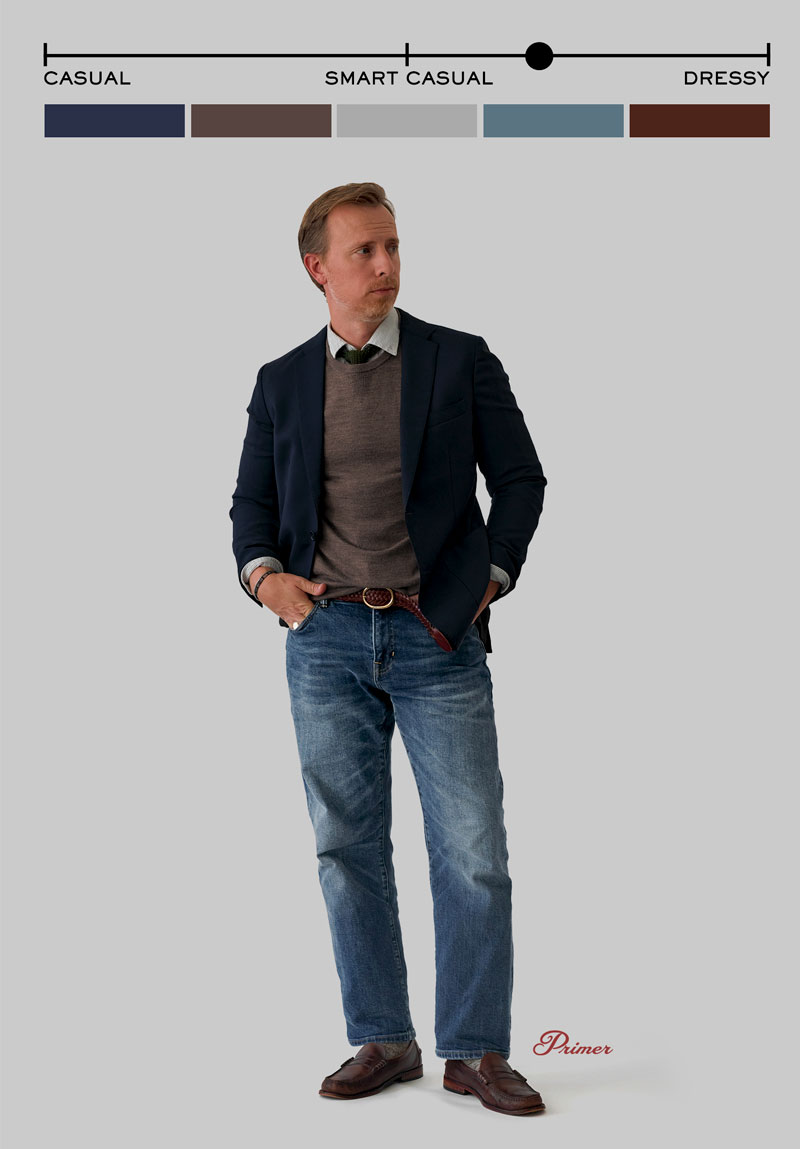
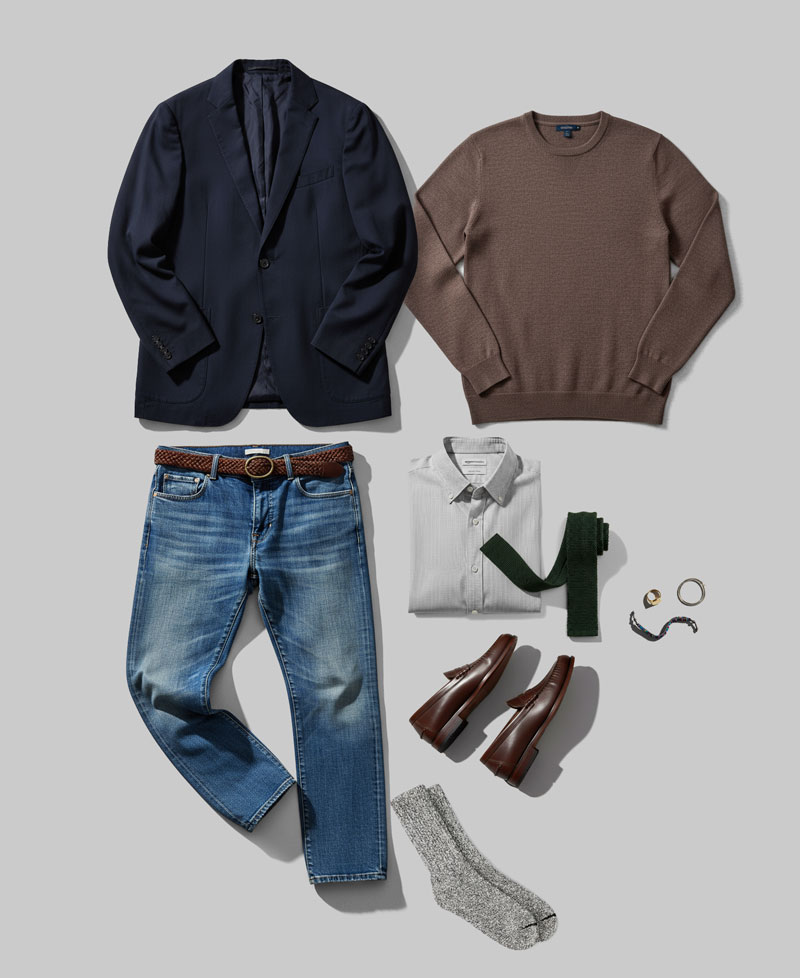
Get the look:
Blazer: J.Crew / Faherty / Lands End
Sweater: Amazon Essentials / Flint & Tinder / Quince
Striped Oxford Shirt: Amazon Essentials
Jeans: Flint & Tinder / Huckberry
Knit Tie: J.Crew / Amazon
Ragg Socks: J.Crew
Penny Loafers: Florsheim / Banana Republic Factory / GH Bass
Jewelry
The creative direction of that era was to appear competent and culturally fluent: a man who played touch football at Thanksgiving and helped his cousin move on weekends. The looseness of the blazer, the familiarity of the jeans, and the tie left slightly loosened all signaled a kind of regular excellence. You wore the outfit because it worked and had worked, and the fact that it looked a little old-fashioned was part of the charm, not in the costume sense, but in the way the pieces looked like things you’d always had.
Like the pleated chinos you might paint the ceiling in, as one J.Crew cover in 1993 showed. The old-fashioned quality came from polish that felt lived in. “This is just what I wear.” That’s why it looked so casual.
By 2015, that goodwill had tightened.
The culture had shifted toward optimization: Calorie tracking, standing desks, personal branding. But it didn’t happen all at once.
The silhouettes of the 90s were loose and easy, but they lived in distinct silos; your dress clothes were one thing, your casual clothes another. They didn’t mix. As young millennial professionals pushed into spaces that still required business casual+, the instinct was to carry forward the dressy silhouette in more casual materials: Jeans, sweaters, and shirts all got slimmer to pass. Slimmer meant sharper, and sharper could mix with the leftover tailoring.

A tie was still worn, but maybe it was skinny now. Jeans replaced pleated khakis, but had to be dark, slim, and sharp. You were still assembling the look, but with more casual ingredients.
This was the birth of what emerged as smart casual: a dress code approach that nodded toward outcome versus a specific list of acceptable items like khakis or a tie. A pass / fail test for situational appropriateness, and less a uniform.
The proportions continued to narrow, fabrics got sleeker, and heritage was packaged into precise, curated choices. The jeans were stiff and dark, often raw, and intentionally cuffed. The blazer was shorter, the fit closer, the styling full of little moves like pocket squares but no belt, sprezzatura ties, and monk straps.
In the early 2000s we still wore dress socks with loafers but they had to be fun patterns. By the mid 10s, the socks were gone altogether.
You wore it to prove you could still look dressed while dodging the formality of an actual suit. It co-evolved with open office plans and startup culture, workplaces that traded hierarchy for hoodies but still expected you to look like you had taste.
The J.Crew of this era gave you rules: trim your collar, hem your pants, slim your life. It was still aspirational, but with homework.
As it always does, a new generation has entered the workforce responding to what came before. If millennials were avoiding the rigidity of business casual by refining their casual clothing, Gen Z has inherited an environment where they reject the need to justify what they want to wear. Looser fits aren’t just about comfort, the proportions have softened because the posture has too. The rejection isn’t a rejection to the polish, it’s refusing the obligation to justify choosing comfort and drape.
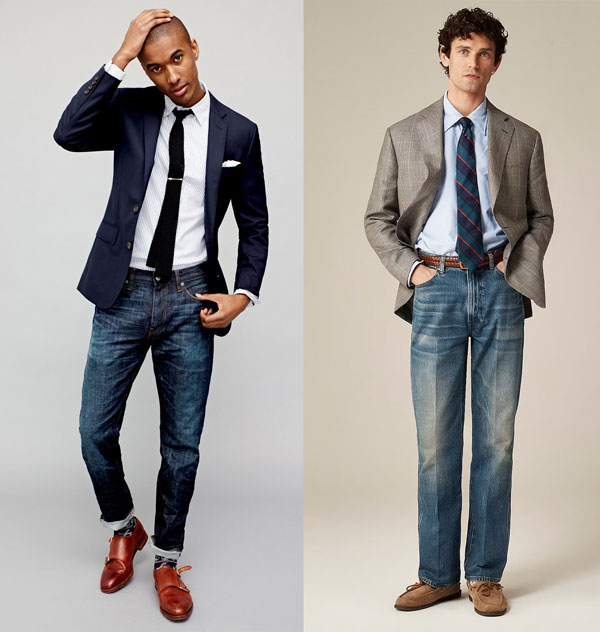
While it can seem like a full aesthetic swing from just a few years ago, philosophically they’re continuing what the millennials started before them, and Gen X before them, and the Baby Boomers before that. Each generation has reacted to the expectations it inherited. The media often describes it like a trend swing, but really it’s a natural progression.
In 2025, the jeans are fuller and lighter wash. The blazer fits, but doesn’t hug the body. The tie isn’t there to prove anything. Wear it, don't wear it, it doesn't matter; more akin to deciding if you’ll wear a watch or not.
There’s less tension between the pieces. The socks are present with loafers again. The belt has texture but is neither a dress belt or a thick jeans belt. It’s not trying to dress down tailoring to make it acceptable. It’s just… worn.
In 1990, it was refined confidence by calculated nonchalance. In 2015, it was tasteful casual via precision. In 2025, it’s balance without justification. None of these versions are better or worse. They just tell you what the moment valued.
And that’s what keeps the outfit useful. The form doesn’t change much, but the approach does.
Check out all of Fall Getup Week:
- Fall Getup Week: What the First Cold Morning Calls For
- Fall Getup Week: The Creative Office
- Fall Getup Week: Casual Modern Layers in City Weight
- Fall Getup Week: Blazer with Jeans Now – How We Got Here from the 90s and 2010s
- Fall Getup Week: Chasing the Iconic Skyfall Shot Through Scotland in Classic Casual


